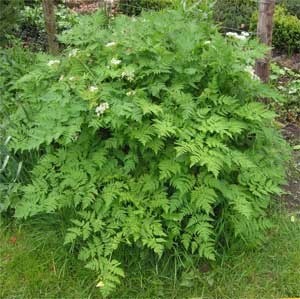
Botanical Name:
Anthriscus
Common names:
Chervil
Description:
In appearance, Chervil closely resembles Italian parsley. Plants have light green, fernlike leaves, grow to about 24 inches in height, and unlike Italian parsley, it tastes slightly like licorice. Chervil is one of the ingredients of fines herbes, an herbal blend of fresh parsley, chervil, tarragon, chives and coriander used widely in French cooking.
Life Cycle:
hardy perennial
Exposure:
partial shade
Cultivation:
Chervil prefers fertile, moist soil. Plants resist transplanting so broadcast seeds directly in the ground in late spring or summer. The plant is easily grown from seeds and produces dainty white flowers that readily reseed themselves in late summer. Plant in succession for harvesting all season. Chervil does not like the heat and should be planted in partial shade and watered regularly to prevent it from bolting prematurely. Plants grow well in widow boxes and containers.
Propagation:
seeds, self-sowing
Parts Used:
leaves
Harvesting and Storage:
To use chervil for cooking, use a scissors to take fresh cuttings from the outer edges of the leaves. The leaves lose their flavor quickly and should be added to dishes immediately prior to serving.
Medicinal Uses:
poultice
Culinary Uses
used to flavor meats, fish, salads, herb butter, cottage cheese, vegetables, creamy soups
Other Uses:
wreaths, skin-care, perennial borders
